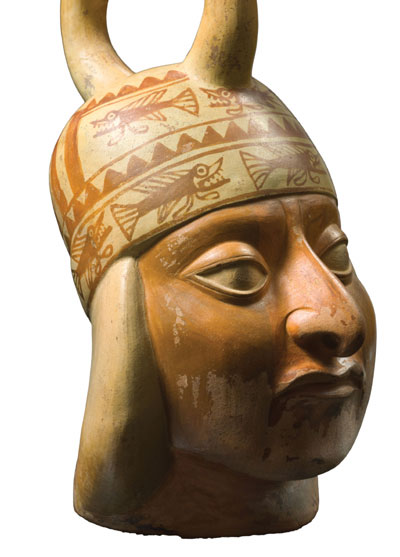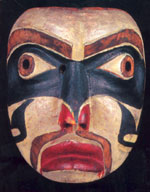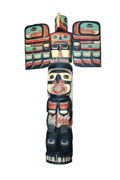The American collections of the Royal Museums of Art and History include over 40 000 objects. It was necessary to choose among all of them the most beautiful examples of the artistic creativity of the populations who lived on the continent. The 1500 objects chosen are now exhibited in ten rooms that cover a total area of 1100 m2, in a modern and didactic setting. The unquestionable master pieces are set very obviously: whether it is the feather coat that supposedly belonged to Montezuma, the oldest Inuit kayak in the world, the statuette that inspired Hergé to write the Tintin album of The Broken ear or the mummy of The Seven crystal balls, as well as original pieces or objects rarely or never exhibited.
The number one museum in Europe
Four hundred pre-Columbian works from the Dora and Paul Janssen collection are included in it. Added to that, nearly 200 objects, at the Africa Museum since 1967, have been recuperated. This great number of pieces allows the museum to offer a very wide range of the different art industries according to the regions as well as to present objects made in very varied materials. We can see sculptures in ivory, in bone, shell, wood or stone (jade, onyx, emerald, basalt, etc), as well as pieces in ceramic, metal, among them the famous Colombian goldsmith work, sample of the art of feathers or textiles over 2 000 years old. With the new presentation of the American rooms, the RMAH have become the number one museum in Europe in the field of pre-Columbian art. The exhibit is divided into five sections that correspond to the large geographic areas of the continent.
North America
North America, grouping together Canada, the United States and Northern Mexico, is illustrated, in particular, by amulets from the Arctic regions, sculpted in ivory. We will also find stone pipes with the faces of the Hopewell culture (the Eastern part of the United States today), as well as beautiful clothes and headdresses from the Indians of the Plaines decorated with glass pearls and feathers, statuettes in terracotta and painted vases from the South West. The presentation of the wooden totemic pole, made in the year 1999 by a Kwakiutl artist for the RMAH at the time of the Indian Summer exhibition, is also one of the strong points of this part of the continent. Finally, the return to the museum of the oldest Inuit kayak known in the world, over 400 years old, will rejoice the public.
Illustration : Kwakiutl Indian mask, Canada, British Columbia, 19th century, wood.
Mesoamerica and Central America
Mesoamerica is a territory including the great civilizations of Mexico, Guatemala, Belize and Honduras. The jade Olmeca masks, with their mysterious expressions, open the door to this panorama of civilizations. The small figurines of Michoacán and Chupicuaro, the Nayarit, Colima and Jalisco statuettes, the monumental works from Veracruz sit next to the Maya wonders, probably the most evolved people of the American continent: jade plaques ornate with divinities in bas-relief, marble or alabaster recipients finely chiselled, vases in terracotta painted with sumptuous decors, large steles ornate with glyphs. The first room is decorated with «frescoes» that reproduce the paintings of a temple of Bonampak, in the Chiapas region in Mexico. The know-how of Central America (from Nicaragua to the Caribbean islands) is illustrated by gold-work representing fantastic animals, stone sculptures, richly painted vases.
South America
South American civilizations developed in particular along the Andes cordillera. This true backbone that crosses the continent from the North to the South, from Colombia to the Tierra de Fuego, gave birth to a mosaic of cultures. Colombian gold-work, one of the richest in the continent, is largely represented. The diversities and the resemblances of the various civilizations of South America are illustrated with the stone and terra cotta statuettes from Ecuador, as well as by the magnificent shapes of the vases and the sumptuous lama wool clothing and multicoloured feathers from Peru.
A last part of the collection enhances the art of the Amazon forest, with impressive feather headdresses, ceramic objects and shrunken heads made by the Jivaro Indians. Traditional clothing and arts and crafts from all Latin America are also exhibited.
Illustration : Totem pole, made by Calvin Hunt and Mervyn Child during the Indian Summer exhibition, 1999, Kwakiutl, cedarwood.
|










